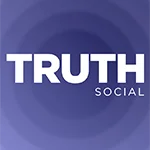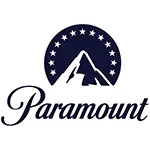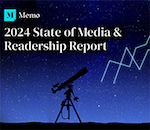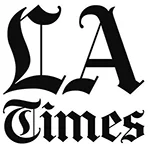The Content Council discussed all things content-related during its annual spring meeting in New York from March 22 through 24.
Content creation, development, navigation, ownership, shareability and capacity to influence targeted audiences at a cost-efficient price were topics discussed during sessions held today at the trendy Gansevoort Park Hotel.
Chris Barth, strategist at Contagious, said his goal is to develop material that gives clients an "unfair advantage" in the marketplace.
He talked about how the dramatic decline of TV viewing among millennials has made that medium irrelevant to youth brands such as Taco Bell and Chipotle.
For instance, young viewers watched an average 168 minutes of TV in 2012 and viewed 109 minutes of mobile fare. That flipped to 177 minutes for mobile and 118 minutes of TV in 2014.
Barth said marketers need to "re-conceptualize TV as video" to attract the eyeballs of millennials.
AT&T is among marketers that "get" content, according to Barth. Ma Bell, traditionally a huge TV advertiser, broke ground and attracted younger viewers with its "Summer Break" video series.
Since AT&T understood the importance of finding audiences where they are, the series about California teens avoided TV screens.
SummerBreak formats drew robust audiences on YouTube, Twitter, Vine, Instagram and Snapchat, enabling the company to reach targeted audiences without paid media.
By letting people choose viewing platforms they are most comfortable with, AT&T generated 200M viewers during SummerBreak's first season.
Showcase Values
Companies use content to showcase values, continued Barth. High-end camera maker Leica developed the "world's most boring video" to showcase its commitment to craftsmanship, he said.
The 45-minute spot features nothing but a Leica staffer polishing a camera to emphasize the message that it spends a lot of time to make products good.
Virgin Atlantic created a horror video of passengers trapped in a crowded plane to encourage business travelers to switch to it for more comfortable and restful rides.
Print is far from dead
Barth said not every piece of content can be reduced to "snackable" bits. Uber and Airbnb maintain glossy magazines aimed at their internal audiences of drivers and homeowners.
Contagious maintains its own magazine to keep readers updated on trends and idea.
Keith Kawasaki, VP-client services at iostudio, talked about the creation of GX magazine for the Army National Guard.
GX publishes 100 pages of "real stories, not created content" every other month to communicate the National Guard experience.
The functional editorial empowers Guardsmen and supports the value of the work they do in disaster relief or on the front lines of combat according to Kawasaki.
GX puts to end the perception of the National Guard as "weekend warriors."
Brand Voice on Twitter
Aly Baer, brand strategy head at Twitter, discussed the growing importance of video on the micro-blogging site and its ability to provide a platform to marketers to provide voice for their brands.
VISA and HP tapped Twitter's Vine (six-second videos) capability to showcase their participation in the Sochi Olympics and launch of a bendable computer, respectively.
Vine's staff created 33 videos to promote Visa's Olympic activity, while HP strung together its five-best Vines into a 30-second commercial.
Baer noted that Twitter has been called the "world's biggest focus group." She views the site as a "bridge not island" that brings viewers and brands closer to what they care about.
Twitter's purpose is to allow users to "discover content in the moment that matters," according to Baer.


 Trump Media & Technology Group today reported a $58.2M net loss on $4.1M in 2023 revenues, a disclosure that drove its stock price down 22.6 percent to $47.96.
Trump Media & Technology Group today reported a $58.2M net loss on $4.1M in 2023 revenues, a disclosure that drove its stock price down 22.6 percent to $47.96. Barry Pollack, an attorney at Wall Street’s Harris St. Laurent & Wechsler, has registered Julian Assange as a client with the Justice Dept. “out of an abundance of caution.”
Barry Pollack, an attorney at Wall Street’s Harris St. Laurent & Wechsler, has registered Julian Assange as a client with the Justice Dept. “out of an abundance of caution.” Paramount Global to slash 800 jobs in what chief executive Bob Bakish calls part of an effort to “return the company to earnings growth"... Rolling Stone editor-in-chief Noah Shachtman is exiting at the end of the month due to disagreements with chief executive Gus Wenner over the direction the magazine is taking... The New York Times broke the $1 billion barrier in annual revenue from digital subscriptions in 2023... Press Forward is investing more than $500 million to strengthen local newsrooms.
Paramount Global to slash 800 jobs in what chief executive Bob Bakish calls part of an effort to “return the company to earnings growth"... Rolling Stone editor-in-chief Noah Shachtman is exiting at the end of the month due to disagreements with chief executive Gus Wenner over the direction the magazine is taking... The New York Times broke the $1 billion barrier in annual revenue from digital subscriptions in 2023... Press Forward is investing more than $500 million to strengthen local newsrooms. The majority of news articles are read within the first three days of publication, according to a recent report.
The majority of news articles are read within the first three days of publication, according to a recent report. The Los Angeles Times gives pink slips to 115 people or 20 percent of its newsroom staff... TIME is also laying off about 30 employees, which is approximately 15 percent of its editorial staff... The Baltimore Banner, which was launched by Stewart Bainum in 2022 after he failed to buy the Baltimore Sun, added 500 subscribers per day in the three days following Sinclair Broadcast Group's deal to purchase the Sun.
The Los Angeles Times gives pink slips to 115 people or 20 percent of its newsroom staff... TIME is also laying off about 30 employees, which is approximately 15 percent of its editorial staff... The Baltimore Banner, which was launched by Stewart Bainum in 2022 after he failed to buy the Baltimore Sun, added 500 subscribers per day in the three days following Sinclair Broadcast Group's deal to purchase the Sun.


 Have a comment? Send it to
Have a comment? Send it to 
No comments have been submitted for this story yet.